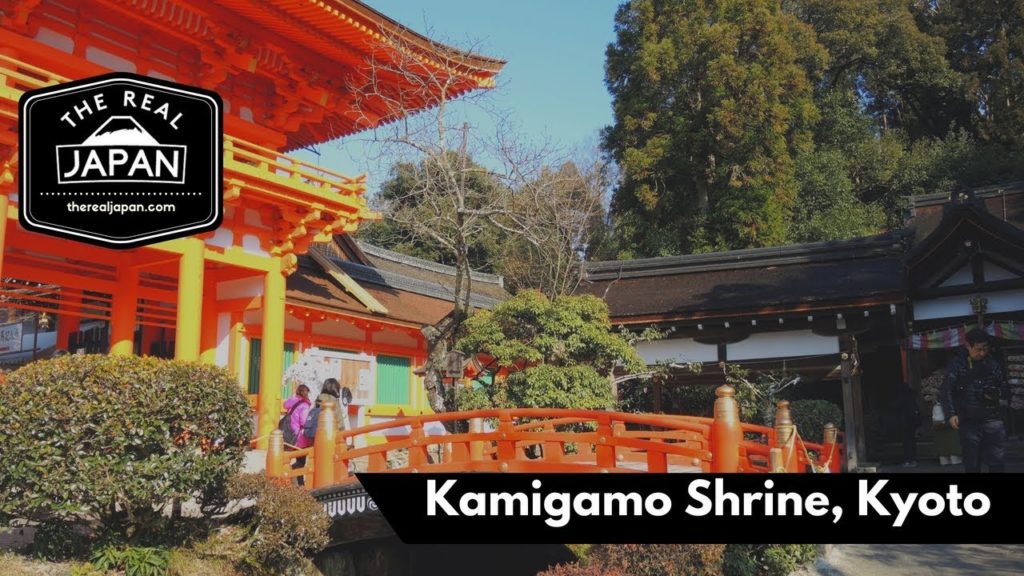Kamigamo Shrine (Kamo-wakeikazuchi), Kyoto | The Real Japan | HD
Kamigamo Shrine is an important Shinto sanctuary on the banks of the Kamo River in north Kyoto, first founded in 678. Its formal name is the Kamo-wakeikazuchi Shrine.
However, due to its location in the far north of Kyoto city (away from the most popular tourist areas) it can easily be missed if you don’t know to look for it.
And it is worth seeking out.
It is one of the oldest Shinto shrines in Japan and is one of the seventeen Historic Monuments of Ancient Kyoto which have been designated by UNESCO as a World Heritage Site.
This film (shot in January just as the last snow was melting) begins outside the second torii (gate), where a groundswoman is burning felled tree wood.
Watching the meltwater dripping from the roof of the Maidono, we walk towards the heart of the shrine. Passing through the manicured gardens.
We stop in front of the main romon (tower gate), watching as pilgrims enter the inner honden. The honden is the most sacred building at a Shinto shrine, intended purely for the use of the enshrined kami (god).
Next to the Omonomi stream, strips of paper containing the worshippers’ fortunes are tied in decorative rows in front of the tower gate in the hope that the good fortune they predict will come to pass.
The Kamo River that wends its way through the shrine grounds gently ripples as we cross over it on the negi-bashi bridge.
We turn to walk past the Tsuchi-no-ya building where people engaged in rituals and ceremonies to purify themselves before participating.
We head back out, pausing to turn and look back at the Hosodono building – known for the cones of sand, belived to have purification powers, that stand in front of it.
Finally, we walk towards the distinctive red of the second torii – the gateway standing at the entrance to the shrine – from where we started our tour.
Torii indicate that the area inside the gateway is sacred space.
The Kamigamo jinja (shrine) is famous for its haiden (worship hall), rebuilt in 1628-1629.
A number of priests’ residences are situated on its grounds, and one, the Nishimura House, is open to the public.
The term Kamo-jinja in Japanese is a general reference to Shimogamo Shrine and Kamigamo Shrine, the traditionally linked Kamo shrines of Kyoto. The Kamo-jinja serve the function of protecting Kyoto from malign influences.
The jinja name identifies the Kamo family of kami or deities who are venerated. The name also refers to the ambit of shrine’s nearby woods, which are vestiges of the primeval forest of Tadasu no Mori.
In addition, the shrine name references the area’s early inhabitants, the Kamo clan, many of whom continue to live near the shrine their ancestors traditionally served.
Kamogamo Shrine is dedicated to the veneration of Kamo Wake-ikazuchi, the kami (god) of thunder.
English webpage:
Subscribe! ►
Get a FREE Guide to Amazing Adventures In The Real Japan:
Enrol on my FREE mini-course How To Plan An Amazing Trip to Japan:
Share This Video:
Get More Inspiration – Subscribe YouTube ►
Follow me on Twitter ►
Follow me on Pinterest ►
Follow me on Facebook ►
Follow me on Instagram+ ►
As The Real Japan, Rob Dyer shares inspiration and resources for discovering and exploring Japan beyond the cliches – The Real Japan. Rob is an expert on those off-the-beaten track places and he loves to share his knowledge.
If you’re really serious about discovering and exploring The Real Japan, I’ve personally put together a free guide to Amazing Adventures in Japan that you really need to get a copy of. In that guide I cover 5 (actually there’s 6 – but don’t tell anyone!) unforgettable adventures in Japan, spanning the northern most and coldest island of Hokkaido, through the main island of Honshu, and down to the sub-tropical southern island of Okinawa. What’s more, 2 of those amazing adventures are completely free – so won’t cost you a penny!
Get your FREE Guide to Amazing Adventures In The Real Japan:
Get More YouTube Inspiration – Subscribe ►
Subscribe to my website ►
Join my private Facebook Group ►
Ask me A Question


AloJapan.com